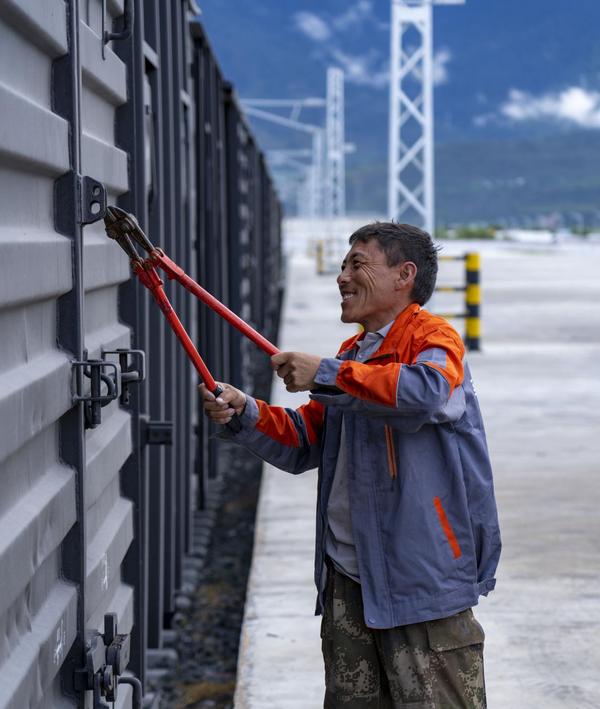By Yuan Quan, Xu Yuyao, People's Daily
At around 7:00 am, the Lhasa railway station, located at an altitude of 3,700 meters in the capital city of southwest China's Tibet autonomous region, went bustling. Large groups of passengers, including tourists and local residents, waited at the station for train announcements.
"Passengers on train C881 please proceed to the ticket gate.” Passengers started moving toward the platforms as the announcements were broadcast, where the Fuxing bullet trains and normal-speed trains stopped to meet their guests.
This has happened every day at the railway station over the past year since the Lhasa-Nyingchi railway was put into operation.

On June 25, 2021, the Lhasa-Nyingchi railway opened, providing southeast Tibet with access to railway services for the first time in history, and bringing the first Fuxing bullet train to the region.
Over the past year, the personnel and economic exchanges between southeast Tibet and other parts of China have become closer and more frequent, and local industries have achieved constant development thanks to the opening of the railway. It has promoted local employment for people in remote regions.
The railway, with a designed speed of 160 km per hour, greatly shortens the travel time for passengers in Tibet. It takes more than four hours to drive from Lhasa to Nyingchi, but the train trip costs only around three.
Different from the highway, the railway was framed to cover much more areas along its course. Nowadays, with an expressway and a railway linking the two cities, all counties and districts along the routes are included in a rapid transportation network.

The railway is the best choice for passengers both on business trips and family visits for its speed, comfort, punctuality and stability. It has recorded daily delivery of over 4,300 passengers and carried a total of nearly 1.14 million passengers since its opening.
A "three-hour economic circle" that covers Lhasa, Nyingchi and other cities has taken shape, injecting strong impetus into the development of Tibet.
"The railway has brought better development to the tourism industry in our county," said an aid-Tibet cadre surnamed Gao from central China's Hubei province, who currently serves as a governor of Gyaca county in Tibet’s Shannan.
Recently, he joined a promotional event for Shannan's tourism held in Lhasa, where he learned that Gyaca county has become a new popular destination for tourists as it only takes two hours to arrive in the county from Lhasa by train.
Since last year, the number of beds at Gyaca county's hotels surged from 300 to around 500. The county has provided a shuttle service between its train station and the county seat, as well as other hot destinations in the county. Convenient transportation is also vitalizing local industries, such as the nut business.

A villager from Bayi district, Nyingchi, said the Nyingchi railway station has changed the life of him and his fellow villagers, who work at the station as stevedores.
Over the past year, more than 6,100 tons of food and beverage, as well as 3,800 tons of electrical appliances have been shipped to the Nyingchi railway station instead of expensive road freight in the past. The railway cargo service not only lowers logistics costs, but also offers job opportunities for many local people. During the busiest period last summer, there were 60 to 70 stevedores working at the train station at most, driving the employment of the labor force in nearby villages.
At present, the local railway department employs more than 400 people nearby to work in cleaning and security.
The Fuxing bullet trains running on the Qinghai-Tibet Plateau are bringing tangible benefits to the transportation, work and life of the local people, carrying them to a brighter future.


